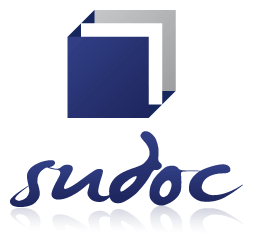Plerixafor use in poor mobilizer patients for autologous transplant.
Uso del plerixafor en pacientes pobres movilizadores para trasplante autólogo.
Main Article Content
Autologous transplantation is the standard treatment for patients with multiple myeloma or intermediate or high grade nonHodgkin’s lymphoma with chemosensitive relapses, which allows patients to recover after receiving chemotherapy at ablative doses. In Colombia, in 2012, 1 per 100 million inhabitants were made (435 patients among autologous and aloal), being a country with low average transplants per person. Objective: To describe the clinical characteristics and the triggers of poor mobilizing patients in a transplant at the Imbanaco Medical Center in Cali and in which paragraphs were received for a second mobilization attempt or to perform the allogeneic transplant. Materials and methods: A retrospective descriptive study based on the medical records of the Imbanaco Medical Center of Cali, from 2004 to 2015. Age, sex, number of apheresis, delay, collection and recovery were taken into account. Results: 207 autologous transplants were performed, 196 in adults and 11 in children. Within adults, 5 patients (2.55%) were classified as poor mobilizers, and of these, 4 were remobilized with plerixa for more G-CSF and 11 aphereses were made in the 4 patients. All the patients were taken to an autologous transplant that received conventional conditioning, BEAM for lymphomas and melfalan for the patient with multiple myeloma. All the patients left aplasia, on average at 14.25 days (range 13 to 15). Conclusions: plerixafor allows mobilization and collection of hematopoietic progenitors in patients ‘poor mobilizers’, and can be transplanted. The delay in administrative procedures endangers the lives of patients.
Downloads
Article Details
Philip T, Guglielmi C, Hagenbeek A, Somers R, Van der Lelie H, Bron D, et al. Autologous bone marrow transplantation as compared with salvage chemotherapy in relapses of chemotherapy-sensitive non-Hodgkin’s lymphoma. N Engl J Med. 1995;333(23):1540-5.
Child JA, Morgan GJ, Davies FE, Owen RG, Bell SE, Hawkins K, et al. High-dose chemotherapy with hematopoietic stem-cell rescue for multiple myeloma. N Engl J Med. 2003;348(19):1875-83.
Jillella AP, Ustun C. What is the optimum number of CD34+ peripheral blood stem cells for an autologous transplant? Stem Cells Dev. 2004;13(6):598-606.
Tricot G, Jagannath S, Vesole D, Nelson J, Tindle S, Miller L, et al. Peripheral blood stem cell transplants for multiple myeloma: identification of favorable variables for rapid engraftment in 225 patients. Blood. 1995;85(2):588-96.
Goterris R, Hernández-Boluda JC, Teruel A, Gómez C, Lis MJ, Terol MJ, et al. Impact of different strategies of second-line stem cell harvest on the outcome of autologous transplantation in poor peripheral blood stem cell mobilizers. Bone Marrow Transpl. 2005;36(10):847-53.
Pasquini M, Wang Z. Current use and outcome of hematopoietic stem cell transplantation: CIBMTR summary slides [internet]. 2013. Disponible en: http://www.cibmtr.org2013.
Instituto Nacional de Salud (INS), Dirección Redes en Salud Pública, Subdirección Red Nacional de Trasplantes y Bancos de Sangre, Coordinación Nacional Red Donación y Trasplante. Informe anual red de donación y trasplantes. 2013.
Schmitz N, Linch D, Dreger P, Goldstone A, Boogaerts M, Ferrant A. Randomised trial of filgrastim mobilized peripheral blood progenitor cell transplantation versus autologous bone-marrow transplantation in lymphoma patients. Lancet. 1996;347:353-7.
Gazitt Y. Comparison between granulocyte colony-stimulating factor and granulocyte-macrophage colony-stimulating factor in the mobilization of peripheral blood stem cells. Curr Opin Hematol. 2002;9(3):190-8.
Neupogen (filgrastim) [package insert]. Thousand Oaks, CA: Amgen Inc.
Levesque JP, Liu F, Simmons PJ, Betsuyaku T, Senior RM, Pham C, et al. Characterization of hematopoietic progenitor mobilization in protease-deficient mice. Blood. 2004;104(1):65-72.
Schmitz N, Linch DC, Dreger P, Goldstone AH, Boogaerts MA, Ferrant A, et al. Randomised trial of filgrastim-mobilised peripheral blood progenitor cell transplantation versus autologous bone-marrow transplantation in lymphoma patients. Lancet. 1996;347(8998):353-7.
Moskowitz CH, Glassman JR, Wuest D, Maslak P, Reich L, Gucciardo A, et al. Factors affecting mobilization of peripheral blood progenitor cells in patients with lymphoma. Clin Cancer Res. 1998;4(2):311-6.
Socinski MA, Cannistra SA, Elias A, Antman KH, Schnipper L, Griffin JD. Granulocyte-macrophage colony stimulating factor expands the circulating haematopoietic progenitor cell compartment in man. Lancet. 1988;1(8596):1194-8.
Ford C, Greenwood J, Anderson J, Snow G, Petersen FB. CD34+ cell adhesion molecule profiles differ between patients mobilized with granulocyte-colony-stimulating factor alone and chemotherapy followed by granulocyte-colony-stimulating factor. Transfusion. 2006;46(2):193-8.
Fitoussi O, Perreau V, Boiron JM, Bouzigon E, Cony Makhoul P, Pigneux A, et al. A comparison of toxicity following two different doses of cyclophosphamide for mobilization of peripheral blood progenitor cells in 116 multiple myeloma patients. Bone Marrow Transpl. 2001;27(8):837-42.
Neulasta (pegfilgrastim) [package insert]. Thousand Oaks, CA: Amgen Inc.; 2007.
Fruehauf S, Klaus J, Huesing J, Veldwijk MR, Buss EC, Topaly J, et al. Efficient mobilization of peripheral blood stem cells following CAD chemotherapy and a single dose of pegylated G-CSF in patients with multiple myeloma. Bone Marrow Transpl. 2007;39(12):743-50.
Hatse S, Princen K, Bridger G, De Clercq E, Schols D. Chemokine receptor inhibition by AMD3100 is strictly confined to CXCR4. FEBS Lett. 2002;527(1-3):255-62.
Flomenberg N, Devine SM, Dipersio JF, Liesveld JL, McCarty JM, Rowley SD, et al. The use of AMD3100 plus G-CSF for autologous hematopoietic progenitor cell mobilization is superior to G-CSF alone. Blood. 2005;106(5):1867-74.
Stiff PJ, Micallef I, Nademanee AP, Stadtmauer EA, Maziarz RT, Bolwell BJ, et al. Transplanted CD34(+) cell dose is associated with long-term platelet count recovery following autologous peripheral blood stem cell transplant in patients with nonHodgkin lymphoma or multiple myeloma. Biol Blood Marrow Transpl. 2011;17(8):1146-53.

















